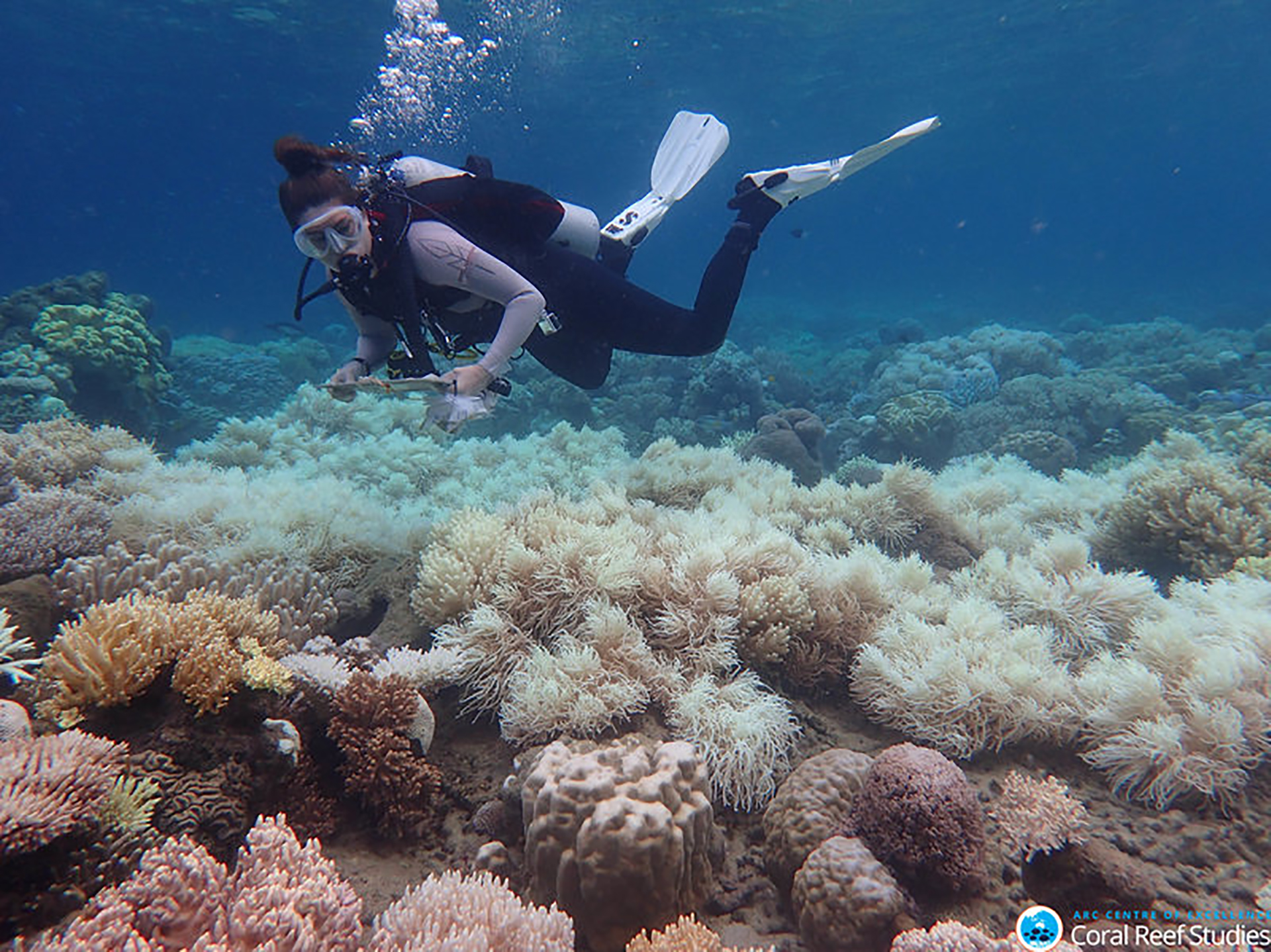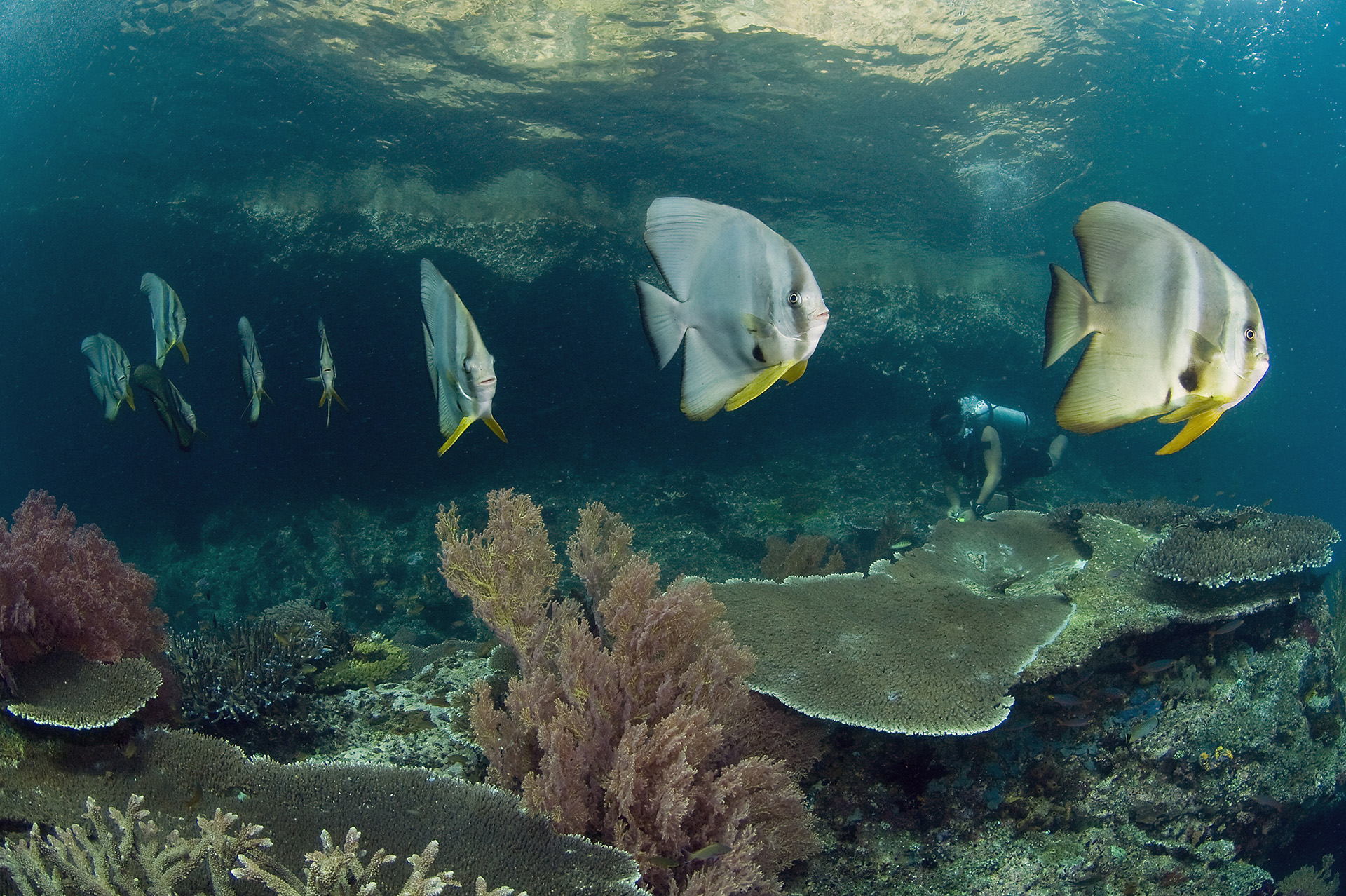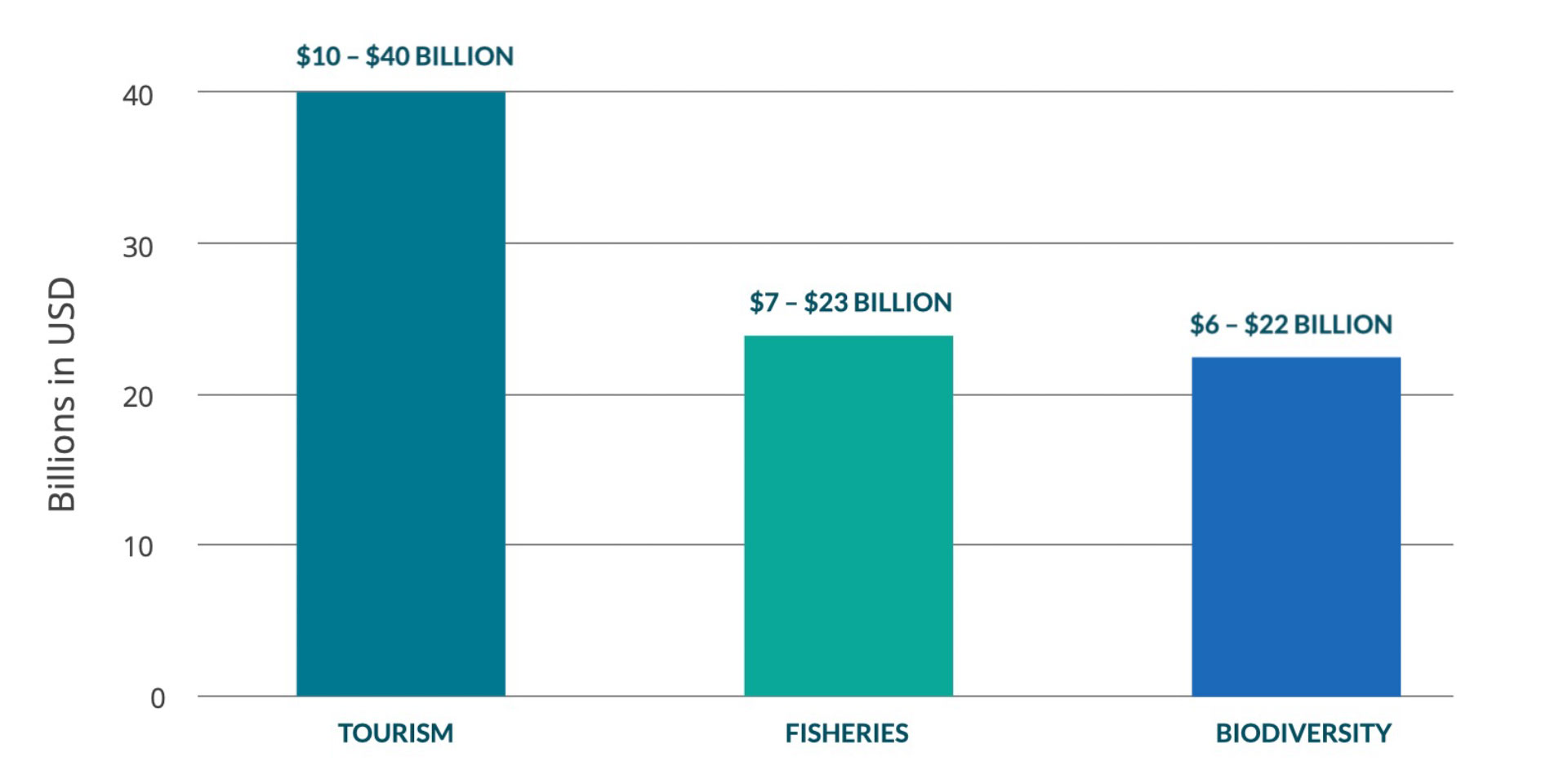Bleaching Impacts
Coral bleaching and associated mortality not only have negative impacts on coral communities, but they also impact fish communities and the human communities that depend on coral reefs and associated fisheries for livelihoods and wellbeing.
Ecological impacts of coral bleaching and related mortality:
- Bleached corals are likely to have reduced growth rates, decreased reproductive capacity, increased susceptibility to diseases and elevated mortality rates.
- Changes in coral community composition can occur when more susceptible species are killed by bleaching events.
- Changes in coral communities also affect the species that depend on them, such as the fish and invertebrates that rely on live coral for food, shelter, or recruitment habitat. Change in the abundance and composition of reef fish assemblages may occur when corals die as a result of coral bleaching.
- Declines in genetic and species diversity may occur when corals die because of bleaching.

Diver surveying a bleached reef on the Great Barrier Reef, Australia. Photo © ARC Centre of Excellence for Coral Reef Studies
Socio-economic impacts of coral bleaching and related mortality:
- Degraded coral reefs are less able to provide the ecosystem services on which local human communities depend. For example, degraded reefs are less productive and may not be able to sustain accretion rates necessary to ensure reefs continue to provide shoreline protection services.
- Reefs damaged by coral bleaching can quickly lose many of the features that underpin the aesthetic appeal that is fundamental to reef tourism. The resultant loss of revenue from reduced tourist activity can threaten the livelihoods of local communities.
- Coral bleaching events that lead to significant coral mortality can drive large shifts in fish communities. This can translate into reduced catches for fishers targeting reef fish species, which in turn leads to impacts on food supply and associated economic activities.
- Cultural values of many tropical island communities (e.g., religious sites and traditional uses of marine resources) depend upon healthy coral reef ecosystems and can be adversely affected by coral bleaching.
- Coral reefs are a valuable source of pharmaceutical compounds. Degraded and dead reefs are less likely to serve as a source for important medicinal resources (i.e., drugs to treat heart disease, cancer, and other illnesses).

Healthy coral reefs attract divers and other tourists. Bleached and degraded reefs can discourage tourism, which can affect the local economy. Photo © Jeff Yonover
Nearly everything in a coral-reef ecosystem depends on corals, or on the reef structure in some way. Coral colonies provide a source of food and shelter for countless reef-associated organisms and their health is of critical importance to the ecology of the reef community. Scientists are discovering that the ecological impacts of coral decline can have detrimental effects on fish communities. For example, a study in Papua New Guinea ref showed a decline in fish communities following declines in associated coral communities. Additionally, the study suggested that juvenile fish are more likely to recruit to areas that have high coral cover. Similar results of declines in fish populations following extensive coral bleaching have also been observed in other areas, such as the Great Barrier Reef, ref Tanzania, ref and the Seychelles. ref Phase shifts in fish species have also been documented (e.g., from dominance of coral-associated fish species to less habitat-specific fish species) following a bleaching event. ref
Degradation of coral reefs also greatly affects human communities that rely on them. People rely on reefs for food, income, and enjoyment. Many hundreds of millions of people are dependent in some way on the goods and services provided by coral reefs, with over 100 million directly dependent on coral reefs for their survival.
Attempts to put dollar values on the global costs of coral bleaching suggest that reef degradation from bleaching could cost from $20 billion (moderate bleaching) to over $84 billion (severe bleaching) in Net Present Value (over a 50-year time horizon). ref

Estimated economic losses to tourism, fisheries, and biodiversity as a result of coral bleaching. Source: Cesar et al. 2003
